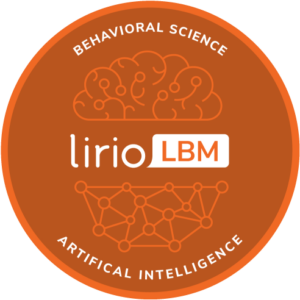
Artificial intelligence (AI) has enormous power to revolutionize the tools available to help people change their health behaviors for the better. AI offers a scalable means to personalize complex interventions. Previously, journeys for patients with multiple health needs needed to be designed by hand using hard-coded decision rules. Now, approaches from machine learning and AI like reinforcement learning can automate some of the decisions that accumulate, offering a truly personalized support program. That improves the lives not only of patients, but those who care for them and pay for that care.
However, it’s imperative to set the record straight sooner rather than later. There are many misconceptions around AI, including:
- People use the term “AI” to describe technologies that don’t belong in this category
- A growing conflation of generative AI (genAI) with AI as a whole, when it represents just one subtype
- Sentiments that AI’s capabilities are overrated and not likely to have the promised impact
- And sentiments that AI is underappreciated, and likely to change the world
Lirio’s perspective
Lirio’s insights are always data-driven, informed by the use of AI in our specific application area: using digital behavior change interventions (DBCIs) to influence real-world health behaviors.
To document how AI is being used in DBCIs, we undertook a scoping review. The Lirio team reviewed 3,100-peer reviewed publications to identify the ones that described technologies meeting modern definitions of AI, applied to change off-screen health behaviors in operational technologies (no paper prototypes or Wizard of Oz implementations accepted!). Ultimately, 23 applications described across 32 papers met all criteria; we dubbed these AI-DBCIs.
Read More
For the full findings of Lirio’s “How are Machine Learning and Artificial Intelligence Used in Digital Behavior Change Interventions? A Scoping Review,” published in Mayo Clinic Proceedings: Digital Health, click here.
What did Lirio learn?
AI-DBCIs include a variety of types of AI. Despite the growing equivalence of genAI and AI more broadly in casual conversation, none of the AI-DBCIs we found use genAI. Rather, we found a mix of classical machine learning algorithms, reinforcement learning, natural language understanding, and conversational AI where content was pregenerated. Of note, the category “classical machine learning algorithms” is broad because many of the papers in this category did not provide enough information about the AI to provide a more specific label.
Most groups building AI-DBCIs develop their own technology. Of the 23 AI-DBCIs we found, only two used third-party services to provide AI capabilities. The rest were all homegrown. While this confers some advantages, including ensuring a product is proprietary and giving the developers maximum control over implementation, it also creates disadvantages. Specifically, it becomes more difficult to compare AI-DBCIs to each other if we are not confident that they use the same underlying mechanisms.
Behavioral scientists need an accurate shared vocabulary around AI.
Most of the papers included in this research were written by behavioral specialists of some sort, rather than by machine learning engineers. Our research team included Lirio’s Chief AI Scientist, Chris Symons. While Lirio’s behavioral scientists leap at the chance to collaborate with him, in this case it was necessary because the descriptions of AI in the papers reviewed varied so much and often used imprecise or even incorrect terminology.
Chris had the job of reviewing the descriptions of the AI, confirming whether they met modern definitions or not, and then appropriately categorizing the AI along multiple characteristics. The number of papers that required his expertise to decipher, and the gaps we observed between the vocabulary of the papers and the vocabulary of AI scientists, made clear that the behavioral field has work to do. Chris developed a plain-language explainer of common AI terminology that we included in the paper to assist with this.
Early evidence is good – but the field has a lot of room to grow. Most of the published papers on AI-DBCIs showed promising results around the ability of these tools to engage users and help them with short-term behavior change. Missing was evidence of more sustained changes, as well as associated health and financial outcomes. This isn’t surprising; AI-DBCIs are cutting-edge technologies, and it takes time to accumulate long-term evidence. We hope to see (and contribute) many more publications in the coming months and years that help the scientific community – and the world at large — understand the longitudinal impact of AI-DBCIs on behavior.
We will learn which AI approaches are best for which types of behaviors and outcomes. The behaviors modified by the AI-DBCIs ran the gamut from physical activity (the most common) to diet to completing medical visits and screenings. Currently, the evidence base isn’t deep enough to know which AI approaches are most effective for which types of behaviors or people. We may learn, for example, that conversational AI is necessary for coaching-type applications, whereas personalization using reinforcement learning is especially helpful for clinical outreach. As this evidence accumulates, the field should become better equipped to select the right technologies to achieve results. As more practitioners adopt a shared vocabulary and approach, it should facilitate these important comparisons.
Despite perceptions on social media, there is diverse work being done applying AI to the modification of real-world health behaviors via digital interventions. At least 23 groups are using modern AI in their designs and the applications focus not on genAI, but on other applications such as recommendation algorithms and reinforcement learning. Early results suggest that AI is neither a panacea nor an empty promise, but rather an emerging approach to scalable behavior change that merits continued nurturing and study. The Lirio team looks forward to directly contributing to the growing knowledge of how AI can support sustained behavior change, as well as learning from others doing the same.
Amy Bucher, Ph.D., is the Chief Behavioral Officer at Lirio where she leads the behavioral design function and co-directs the Behavioral Reinforcement Learning Lab (BReLL). Amy has deep experience in digital health and using behavioral science to support sustained health behavior changes for wellness, prevention, and chronic condition management. She is the author of Engaged: Designing for Behavior Change, published by Rosenfeld Media.
